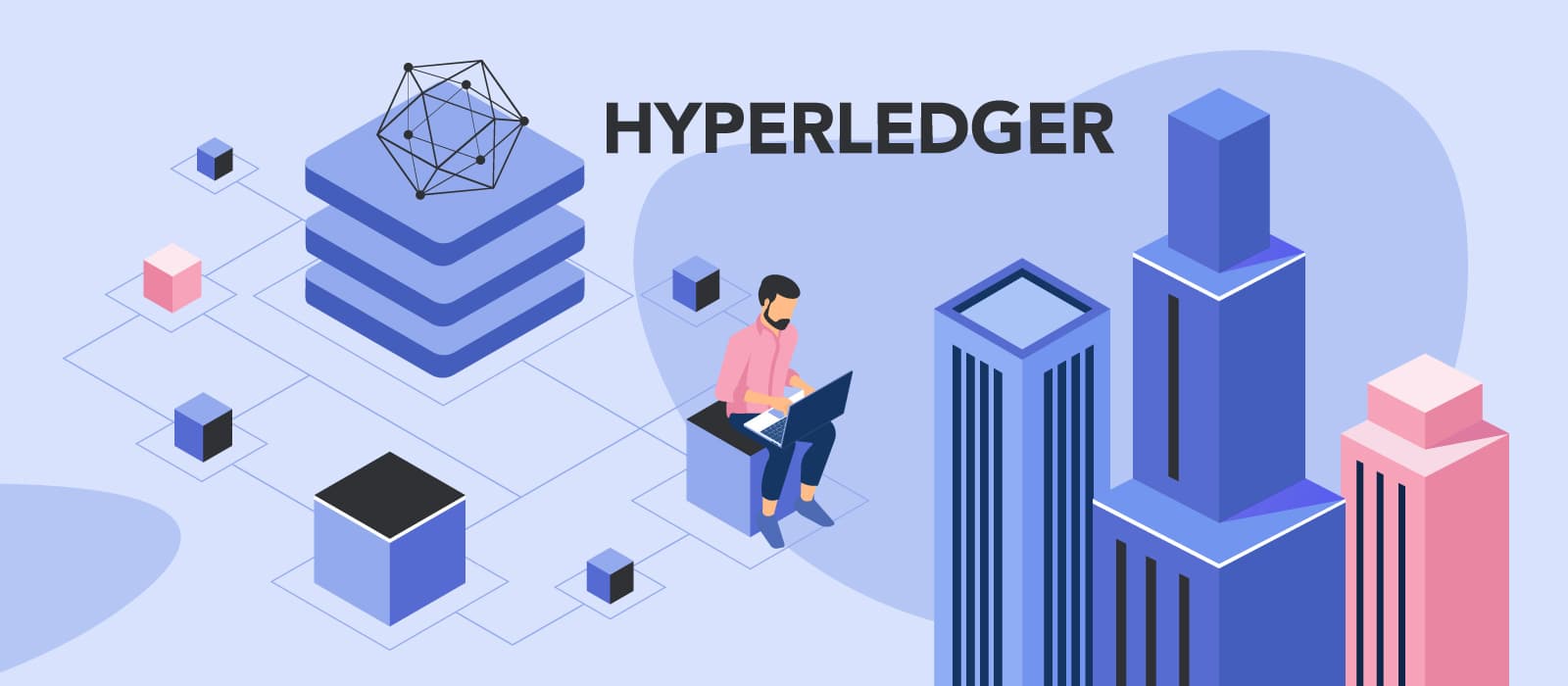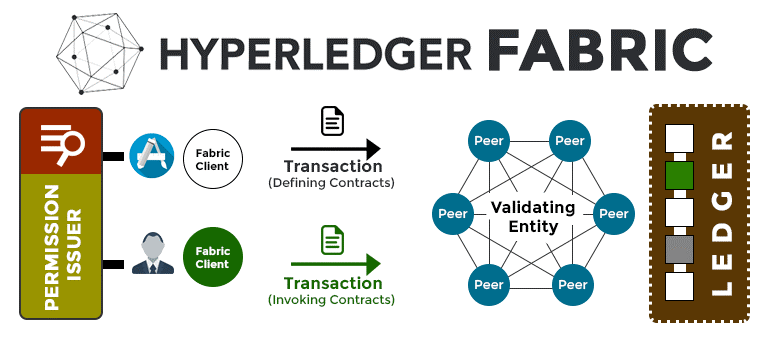From Complexity to Simplicity: Navigating Hyperledger Fabric with Fablo
 Joan Ndegwa
Joan Ndegwa
Blockchain technology has revolutionized the way enterprises conduct transactions, and the Hyperledger Foundation, hosted by the Linux Foundation, stands as the driving force behind open-source blockchain projects. Hyperledger Fabric, a robust enterprise blockchain framework, has gained widespread adoption for its ability to streamline decentralized application development.
Hyperledger Foundation: Nurturing Blockchain Innovation
The Hyperledger Foundation serves as the central hub for open-source blockchain projects. Established to advance cross-industry collaboration and promote the adoption of distributed ledger technologies, the Hyperledger Foundation fosters an ecosystem of diverse projects, each addressing specific challenges and contributing to the growth of enterprise blockchain solutions. As an umbrella body, the foundation provides a collaborative space for developers, organizations, and enthusiasts to collectively innovate and build upon open-source blockchain technologies.
Understanding Hyperledger Fabric

Hyperledger Fabric, one of the flagship projects under the Hyperledger Foundation, stands out as a permissioned blockchain platform tailored for enterprise needs. Offering modularity, scalability, and confidentiality, Fabric enables organizations to create and manage their own private, permissioned blockchains. Its flexible architecture supports complex business logic, making it a preferred choice for industries seeking secure and efficient blockchain solutions.
However, setting up and managing a Hyperledger Fabric network can be a complex task. Recognizing this challenge, the Fablo project emerges as a game-changer, aiming to simplify and democratize the deployment of Hyperledger Fabric networks.
Unveiling Fablo: A Solution to Deployment Complexity
Setting up and managing a custom Hyperledger Fabric network has historically been a complex endeavor.
Fablo was conceived in response to the challenges associated with setting up and managing custom Hyperledger Fabric networks. Recognizing the complexity of the deployment process, Fablo emerged with a mission to simplify, streamline, and democratize the creation of Hyperledger Fabric networks. The driving force behind Fablo is the realization that setting up a custom Hyperledger Fabric network involves intricate configurations and can be such a daunting task.
Fablo aims to make the process easy, straightforward, and accessible for developers and enterprises so they can focus on building decentralized applications without being hindered by network complexities.
Key Features of Fablo
Environment and Protocols
Docker Compatibility: Fablo operates within a Docker environment, ensuring seamless integration and portability.
Experimental Kubernetes support with Bevel Operator to enhance deployment capabilities
Network Configuration
Multiple Organizations and Channels: Enables users to define and configure multiple organizations and channels within a single, concise configuration file.
Chaincode Installation and Upgrade: Simplifies the deployment of chaincodes, supporting installation and upgrade processes effortlessly.
REST API Client: Integrated REST API client for Certificate Authorities (CA) and chaincodes, providing convenient interaction and management.
Consensus Protocols: Supports both RAFT and solo consensus protocols, offering flexibility in choosing the consensus mechanism.
Blockchain Explorer
- Integrated Blockchain Explorer: Fablo includes an optional Blockchain Explorer that can be enabled for each organization, enhancing visibility into network activities.
Advanced Features and Usage
Chaincode Management: Fablo provides commands for managing chaincodes, including installation, upgrade, invocation, and listing.
Channel Scripts: Fablo includes scripts for managing channels, providing valuable insights and information about channel configurations.
Snapshot and Restore: Fablo supports creating snapshots of the network state, enabling easy backup and restoration of the entire network.
Kubernetes Support: Fablo's roadmap includes support for Kubernetes, enhancing its deployment capabilities.
Installation and Getting Started with Fablo
Fablo is distributed as a single shell script, facilitating easy installation. Users can install it globally or include it in the project directory. Getting started is a straightforward process:
# Get a copy for a single project
curl -Lf https://github.com/hyperledger-labs/fablo/releases/download/1.2.0/fablo.sh -o ./fablo && chmod +x ./fablo
After installation, creating a local Hyperledger Fabric network is as simple as:
./fablo init node rest
./fablo up
Managing the Network with Fablo
Fablo offers a range of commands to manage the Hyperledger Fabric network:
init- Creates a simple network configuration file to kickstart development or set up a fast prototype.up/down/start/stop- Controls the lifecycle of the Hyperledger Fabric network.prune- Removes the Fablo-target directory, downs the network.resetandrecreate- combination of down and up steps, useful for a fresh network instance without state.
Perks of Utilizing Fablo
- Concise, declarative Configuration:
Fablo provides a single, concise, and flexible configuration file that completely describes the desired Hyperledger Fabric network topology. This eliminates the need for later adjustments, flags, or additional commands, simplifying the deployment process.
- Flexibility in Design:
The configuration file is as flexible as Hyperledger Fabric itself, allowing users to define multiple organizations, channels, and chaincodes, and combine them in various ways.
- Ease of Understanding:
The single configuration file enhances the clarity of network topology, easing collaboration, code reviews, and integration into Continuous Integration processes.
- Validation and Highlighting:
Built-in schema and syntax highlighting in the configuration file, coupled with a validation stage, accelerates development and catches potential errors early in the process.
- RAFT and Solo Support:
Fablo supports RAFT and solo consensus protocols, providing users with the flexibility to choose the consensus mechanism that best suits their needs.
Objective of the LFX Mentorship Program
My journey with the Fablo project commenced when I had the privilege of participating in the Linux Foundation Mentorship Program (LFX) and it’s been such an incredible experience.
This program is a dynamic initiative meticulously designed to nurture talent and cultivate diversity in open source. It provides a unique platform for developers that facilitates learning, experimentation, and contribution to cutting-edge open-source projects.
Fablo is doubling down on enhancing Kubernetes Operators support. The objective of the project was to enhance the current Docker setup by adding some features and improving the Kubernetes Operators support which is currently in an experimental phase.
For the Docker setup, my task was to build some key features that support testing such as fablo chaincode list and fablo chaincode invoke
For the Kubernetes setup, my task was to implement automated tests for a running Hyperledger Fabric network, ensuring compatibility with Fablo's features, supporting network lifecycle management, and handling intricate Hyperledger Fabric network topologies.
The ultimate goal is to improve test coverage, address critical issues, and enhance the overall reliability of Fablo's Kubernetes Operators support.
I intend to delve deeper into my experience building Fablo in a dedicated blog post.
Conclusion
Fablo's significance lies in its ability to simplify the intricate process of setting up and managing Hyperledger Fabric networks. By providing a single configuration file, supporting multiple organizations, channels, and consensus protocols, Fablo empowers developers to focus on building decentralized applications without the complexities of network setup.
Fablo ensures an easy setup, improves developer experience, and maintains a shallow learning curve. As an active project within the Hyperledger Labs, Fablo continues to evolve, addressing challenges and contributing to the accessibility and usability of Hyperledger Fabric for the broader community.
Through projects like Fablo, the Hyperledger Foundation continues to play a pivotal role in shaping the future of enterprise blockchain solutions.
Going through my journey within the LFX Mentorship Program, working on the Fablo project, the significance of open source collaboration and mentorship becomes increasingly evident.
Fablo, with its innovative approach to Hyperledger Fabric deployment, not only simplifies the present but also paves the way for a more user-friendly future in enterprise blockchain solutions, thereby accelerating the adoption of decentralized solutions.
Through the collaborative efforts within the LFX program, we are not just coding; we are contributing to the evolution of blockchain technology and building a vibrant, diverse community of developers. The journey with Fablo and LFX is not just about lines of code; it's about empowering the future of decentralized applications and blockchain innovation.
Subscribe to my newsletter
Read articles from Joan Ndegwa directly inside your inbox. Subscribe to the newsletter, and don't miss out.
Written by
